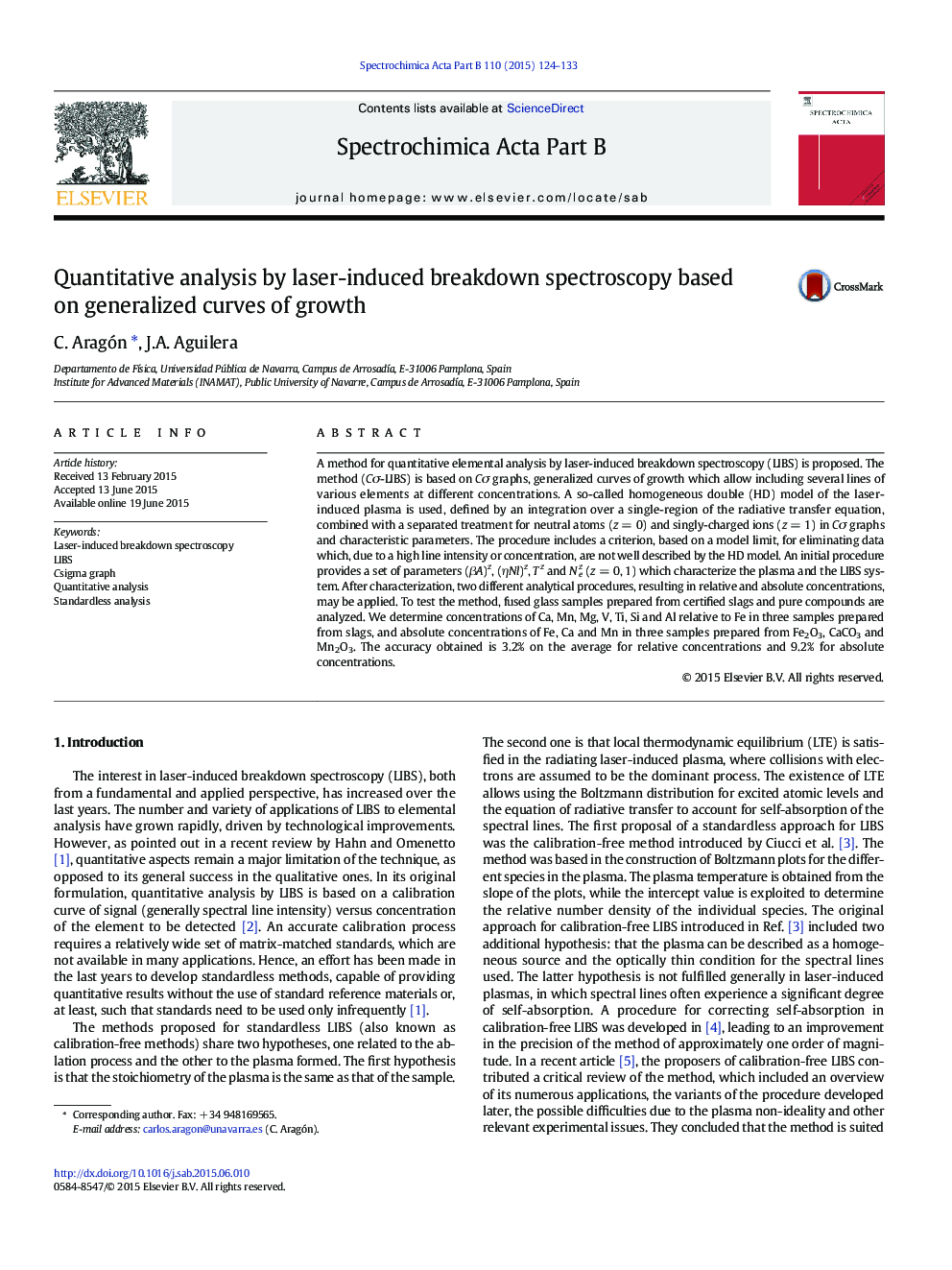| Article ID | Journal | Published Year | Pages | File Type |
|---|---|---|---|---|
| 1239984 | Spectrochimica Acta Part B: Atomic Spectroscopy | 2015 | 10 Pages |
•Method for quantitative analysis by LIBS, based on Csigma graphs•Conventional calibration is replaced with characterization of the LIBS system.•All elements are determined from measurement of one or two Csigma graphs.•The method is tested with fused glass disks prepared from slags and pure compounds.•Accurate results for relative (3.2%) and absolute concentrations (9.2%)
A method for quantitative elemental analysis by laser-induced breakdown spectroscopy (LIBS) is proposed. The method (Cσ-LIBS) is based on Cσ graphs, generalized curves of growth which allow including several lines of various elements at different concentrations. A so-called homogeneous double (HD) model of the laser-induced plasma is used, defined by an integration over a single-region of the radiative transfer equation, combined with a separated treatment for neutral atoms (z = 0) and singly-charged ions (z = 1) in Cσ graphs and characteristic parameters. The procedure includes a criterion, based on a model limit, for eliminating data which, due to a high line intensity or concentration, are not well described by the HD model. An initial procedure provides a set of parameters (βA)z, (ηNl)z, Tz and Nez (z = 0, 1) which characterize the plasma and the LIBS system. After characterization, two different analytical procedures, resulting in relative and absolute concentrations, may be applied. To test the method, fused glass samples prepared from certified slags and pure compounds are analyzed. We determine concentrations of Ca, Mn, Mg, V, Ti, Si and Al relative to Fe in three samples prepared from slags, and absolute concentrations of Fe, Ca and Mn in three samples prepared from Fe2O3, CaCO3 and Mn2O3. The accuracy obtained is 3.2% on the average for relative concentrations and 9.2% for absolute concentrations.
